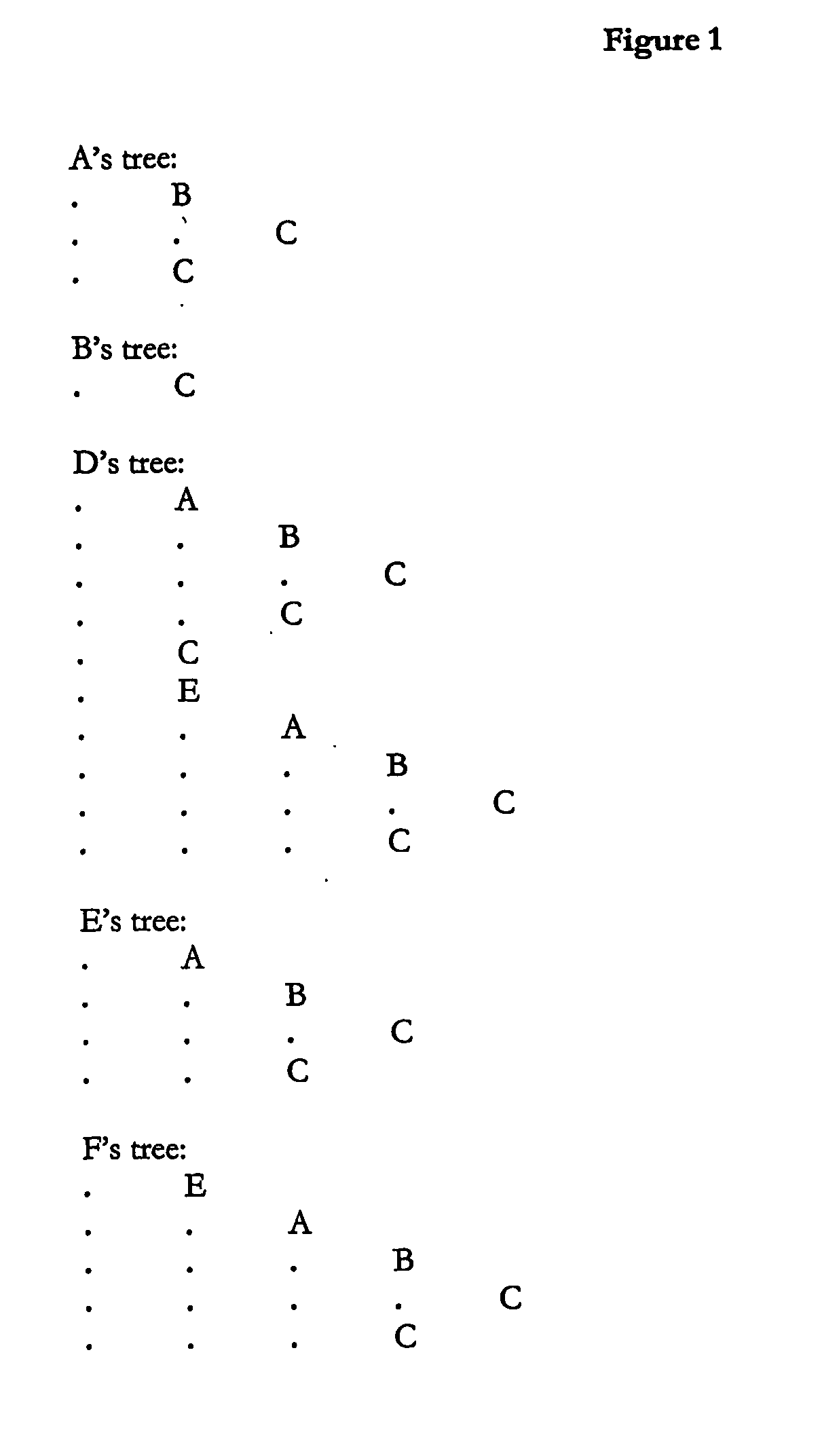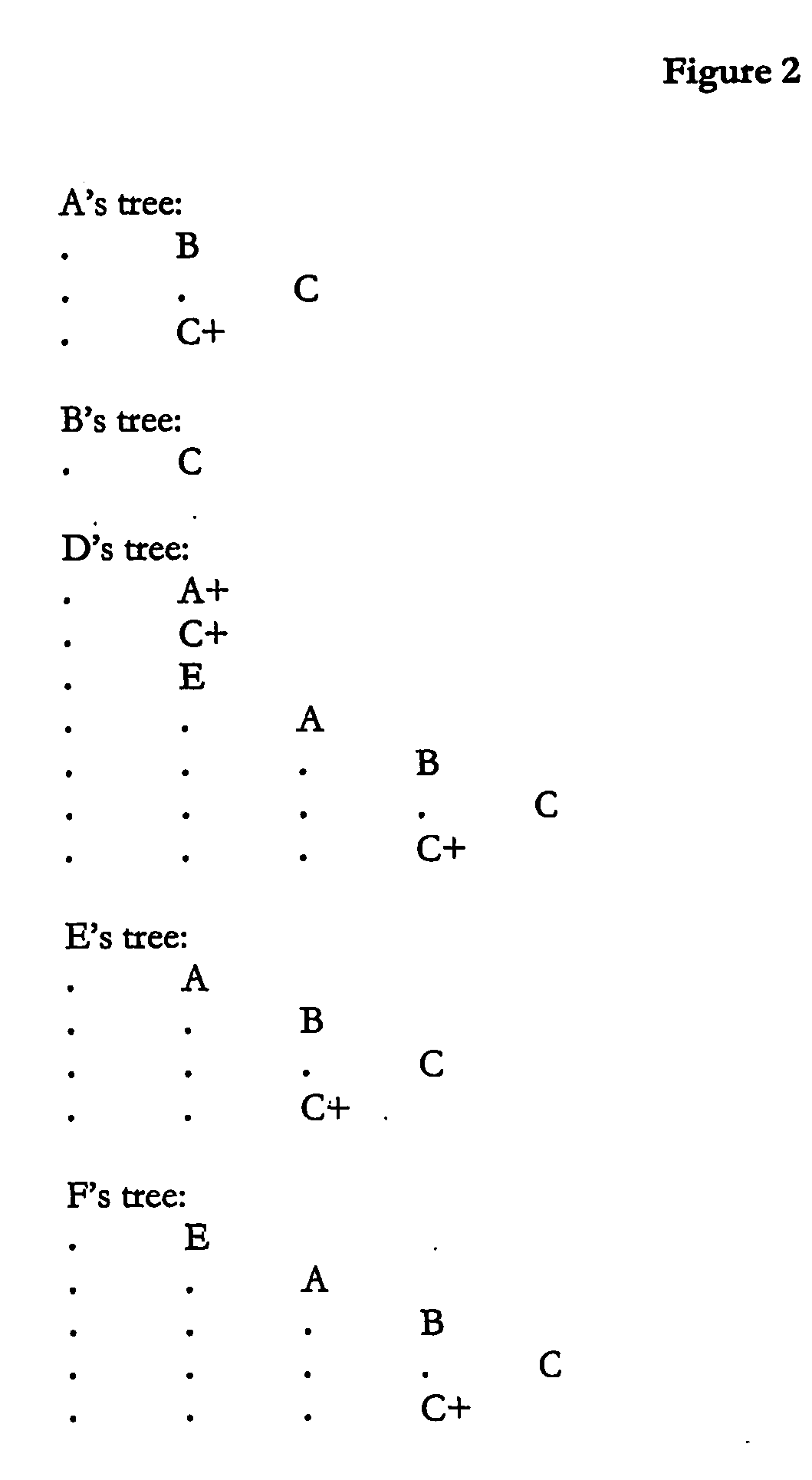Method of automatically analysing the structure of a software system
a software system and automatic analysis technology, applied in reverse engineering, instruments, computing, etc., can solve the problems of difficult identification of inappropriate coupling between components of the os, difficult to perform regular re-calculations as the os build progresses, and takes several days to complete, etc., to achieve the effect of simplifying production
- Summary
- Abstract
- Description
- Claims
- Application Information
AI Technical Summary
Benefits of technology
Problems solved by technology
Method used
Image
Examples
example 1
[0020] No Circular Dependencies
[0021] The following table specifies the complete direct dependency structure of a hypothetical OS with six executables, A, B, C, D, E and F:
A: B CB: CC:D: A C EE: AF: E
[0022] Using this direct dependency structure, a dependency tree can be generated for each executable which includes direct dependencies as well as their dependencies and so on recursively, as shown in FIG. 1:
[0023] In these representations of the dependency trees, a direct dependency is indented by one tab to the right of the executable that depends on it, so as before: [0024] 1. E depends directly on A only [0025] 2. D depends directly on A, C and E [0026] 3. A depends directly on B and C [0027] 4. B depends directly on C only [0028] 5. C depends on nothing.
[0029] This can be simplified by collapsing sub-trees that are repeated in the tree, giving the following trees, where a ‘+’ indicates a collapsed executable sub-tree, expanded further to the right somewhere else in the tree, ...
example 2
[0033] Includes Circular Dependencies
[0034] The following table specifies the complete direct dependency structure of a second hypothetical OS:
A: B CB: CC: A
[0035] Using this direct dependency structure, the dependency trees are represented as follows—where recursion stops on reaching a circular dependency to avoid infinite regress, as shown in FIG. 3:
[0036] Again the unique dependency depth number is found by counting the levels of indentation, given by the maximum number of dots in any row above.
Dependency DepthExecutableNumberA3B3C3
[0037] Partitioning the OS into levels again using these dependency depths produces the following:
[0038] Level 3:
PUM
 Login to View More
Login to View More Abstract
Description
Claims
Application Information
 Login to View More
Login to View More - R&D
- Intellectual Property
- Life Sciences
- Materials
- Tech Scout
- Unparalleled Data Quality
- Higher Quality Content
- 60% Fewer Hallucinations
Browse by: Latest US Patents, China's latest patents, Technical Efficacy Thesaurus, Application Domain, Technology Topic, Popular Technical Reports.
© 2025 PatSnap. All rights reserved.Legal|Privacy policy|Modern Slavery Act Transparency Statement|Sitemap|About US| Contact US: help@patsnap.com



